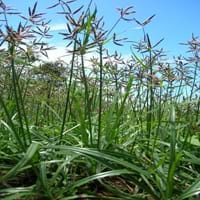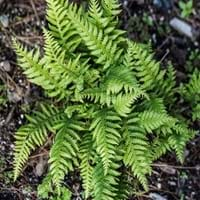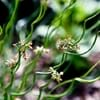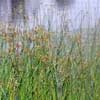Life Span
Perennial
Perennial
Origin
World/Pandemic
Eastern Asia
Types
Not Available
Not Available
Habitat
Wild
Damp shady woods, Wet ground, Wet lands
USDA Hardiness Zone
5-12
7-8
Sunset Zone
A1, A2, A3, H1, H2, 1a, 1b, 2a, 2b, 3a, 3b, 4, 5, 6, 7, 8, 9, 10, 11, 12, 13, 14, 15, 16, 17, 18, 19, 20, 21, 22, 23, 24
4
Habit
Mat-forming
Arching/Fountain-shaped
Minimum Width
Not Available
Flower Color
Orange, Gold, Bronze, Tan
Non Flowering Plant
Flower Color Modifier
Bicolor
Bicolor
Fruit Color
Dark Brown
Non Fruiting Plant
Leaf Color in Spring
Green, Yellow green
Light Green
Leaf Color in Summer
Green, Yellow green
Light Green
Leaf Color in Fall
Green, Yellow green
Light Green
Leaf Color in Winter
Green, Yellow green
Not Available
Leaf Shape
V-Shaped
Pinnate
Plant Season
Not Available
Spring, Summer, Fall
Sunlight
Full Sun, Partial Sun
Full Sun, Partial shade
Growth Rate
Very Fast
Medium
Type of Soil
Clay, Loam, Sand
Clay, Loam
The pH of Soil
Acidic, Neutral, Alkaline
Acidic, Neutral
Soil Drainage
Average
Average
Bloom Time
Summer
Fall, Spring, Summer
Tolerances
Drought
Wet Site
Where to Plant?
Ground
Container, Ground, Pot
How to Plant?
creeping rhizomes, Seedlings, Tubers
From Rhizomes
Plant Maintenance
Medium
Medium
Watering Requirements
Requires consistently moist soil
Water Deeply, Water in morning to avoid prompting diseases, Water occasionally, Water slowly, and allow to dry completely between soakings
In Summer
Lots of watering
Lots of watering
In Spring
Moderate
Moderate
In Winter
Average Water
Average Water
Soil pH
Acidic, Neutral, Alkaline
Acidic, Neutral
Soil Type
Clay, Loam, Sand
Clay, Loam
Soil Drainage Capacity
Average
Average
Sun Exposure
Full Sun, Partial Sun
Part sun, Partial shade, Partial Sun
Pruning
Remove damaged leaves, Remove dead branches, Remove dead leaves
Remove damaged leaves, Remove dead branches, Remove dead leaves
Fertilizers
All-Purpose Liquid Fertilizer
All-Purpose Liquid Fertilizer, Apply N-P-K
Pests and Diseases
Rust
Leaf curl, Leaf rust, Red blotch, Scale, Scale insects
Plant Tolerance
Drought
Drought, Humidity, Rocky Soil, Shade areas, Wet Site
Flowers
Insignificant
None
Flower Petal Number
Single
Single
Foliage Texture
Fine
Medium
Foliage Sheen
Not Available
Matte
Attracts
Pigs
Butterflies
Allergy
Oral Allergy
Not Available
Aesthetic Uses
Not Used For Aesthetic Purpose
Bog Garden, Borders
Beauty Benefits
Good for skin, Protects from sun damage
Not Available
Environmental Uses
Air purification
Air purification
Medicinal Uses
Aphrodisiac, Digestive, Diuretic, Tonic
Not Available
Part of Plant Used
Fruits
Not Available
Other Uses
For making oil, used for weaving hats
Not Available
Used As Indoor Plant
No
Yes
Used As Outdoor Plant
Yes
Yes
Garden Design
Not Available
Bog Garden, Groundcover, Mixed Border, Rock Garden, Wall, Tropical
Botanical Name
CYPERUS esculentus
THELYPTERIS decursive pinnata
Common Name
Nut Sedge,chufa sedge, nut grass, yellow nutsedge
Beech Wood Fern
Winged Beech Fern
In Hindi
अखरोट सेज
Japanese Beech Fern
In German
Nuss -Segge
Japanische Buche Fern
In French
souchet
Japanese Beech Fern
In Spanish
tuerca de la juncia
Helecho de haya japonesa
In Greek
καρύδι σπαθόχορτο
Ιαπωνικά Οξιά Fern
In Portuguese
Nut Sedge
Japonês Beech Fern
In Polish
nakrętka turzyca
Japoński Buk Fern
In Latin
nut Sedge
Phlox Italica
Phylum
Magnoliophyta
Angiosperms
Class
Liliopsida
Polypodiopsida
Order
Poales
Polypodiales
Family
Cyperaceae
Thelypteridaceae
Genus
Cyperus
Thelypteris
Clade
Angiosperms, Commelinids, Monocots
Not Available
Tribe
Cypereae
Not Available
Subfamily
Not Available
Not Available
Number of Species
Not Available
Not Available
Importance of Nut Sedge and Japanese Beech Fern
Want to have the most appropriate plant for your garden? You might want to know the importance of Nut Sedge and Japanese Beech Fern. Basically, these two plants vary in many aspects. Compare Nut Sedge and Japanese Beech Fern as they differ in many characteristics such as their life, care, benefits, facts, etc. Every gardener must at least have the slightest clue about the plants he wants to plant in his garden. Compare their benefits, which differ in many ways like facts and uses. The medicinal use of Nut Sedge is Aphrodisiac, Digestive, Diuretic and Tonic whereas of Japanese Beech Fern is Not Available. Nut Sedge has beauty benefits as follows: Good for skin and Protects from sun damage while Japanese Beech Fern has beauty benefits as follows: Good for skin and Protects from sun damage.
Compare Facts of Nut Sedge vs Japanese Beech Fern
How to choose the best garden plant for your garden depending upon its facts? Here garden plant comparison will help you to solve this query. Compare the facts of Nut Sedge vs Japanese Beech Fern and know which one to choose. As garden plants have benefits and other uses, allergy is also a major drawback of plants for some people. Allergic reactions of Nut Sedge are Oral Allergy whereas of Japanese Beech Fern have Not Available respectively. Having a fruit bearing plant in your garden can be a plus point of your garden. Nut Sedge has no showy fruits and Japanese Beech Fern has no showy fruits. Also Nut Sedge is not flowering and Japanese Beech Fern is not flowering . You can compare Nut Sedge and Japanese Beech Fern facts and facts of other plants too.





